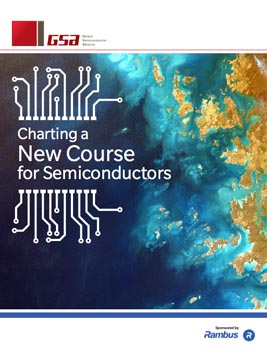Monetizing Semiconductors From Silicon to Services
Over the past five years, the semiconductor industry has faced a number of complex challenges. As 2018 begins, the industry continues to seek a return to stability and organic growth within the parameters of a new business paradigm that is both viable and collaborative.
Over the past five years, the semiconductor industry has faced a number of complex challenges. These include increased development costs, eroded ASPs, market saturation and heightened, yet unsustainable M&A activity.
As 2018 begins, the semiconductor industry continues to seek a return to stability and organic growth within the parameters of a new business paradigm that is both viable and collaborative. Within this context, semiconductor companies are acknowledging the potential of new markets and downstream revenue opportunities as they explore a more comprehensive “silicon to services” model that spans the data center to the mobile edge.
This includes end-to-end IoT security solutions and PaaS-based services such as in-field feature configuration, advanced analytics, predictive maintenance alerts, self-learning algorithms and intelligent, proactive interaction with customers. In addition to services, the concept of open-source hardware and building silicon from disaggregated, pre-verified chiplets is beginning to gain traction as companies move to slash costs and reduce time-to-market for heterogeneous designs.
Specific strategies to unlocking the full potential of semiconductors will undoubtedly vary, which is why it is important for us to explore a future in which the industry, along with various research organizations and government offices, plays an open and collaborative role in helping to sustainably monetize both silicon and services.

Download Part 1: Charting a New Course for Semiconductors
After half a century of sustained expansion and innovation, semiconductor sales and profits are noticeably slowing. This can be attributed to a number of factors, including the rising cost of designing and manufacturing new chips. Although still at a relatively nascent stage, open-source hardware has already managed to positively disrupt the semiconductor industry by encouraging innovation, reducing development costs and accelerating time to market. Reprogrammable chips can potentially replace a one-size fits all strategy for a ‘Features as a Service’ (FaaS) approach. As such, reprogrammable silicon will undoubtedly play a major part in building the IoT, which spans a broad range of applications and environments with varying requirements. A Features as a Service (FaaS) framework will allow companies to dynamically enable features at multiple points in the semiconductor value chain, ranging from manufacturing to in-field use. Join us as we explore potential ways of creating a more sustainable future for the semiconductor industry and beyond.
